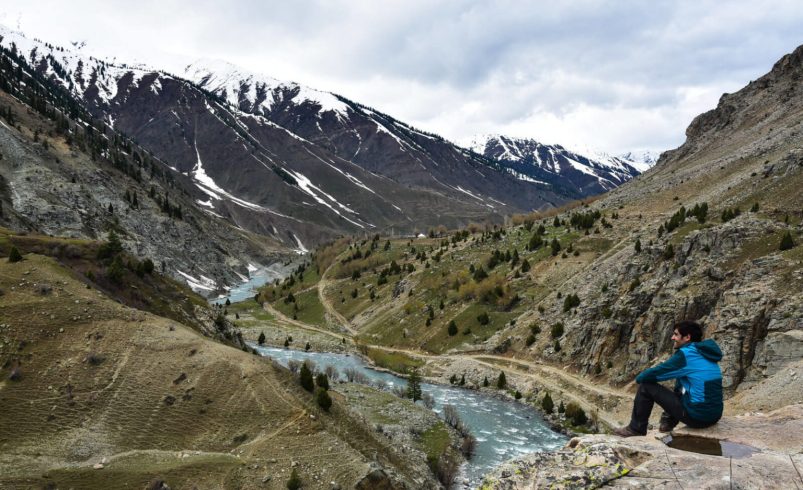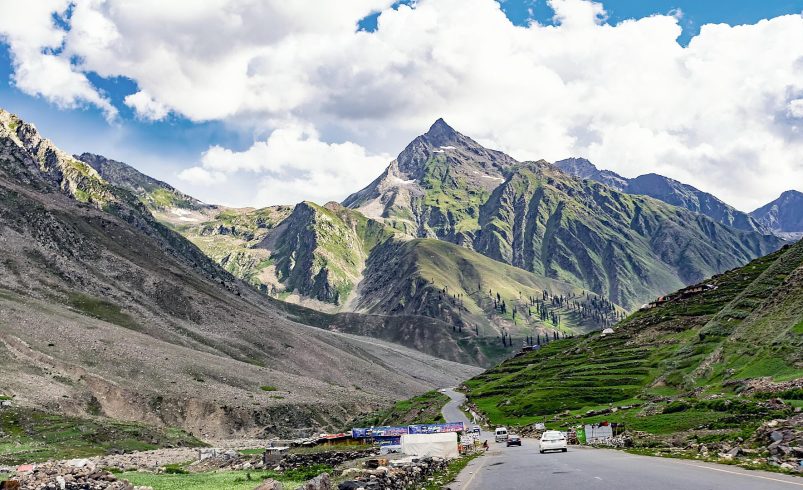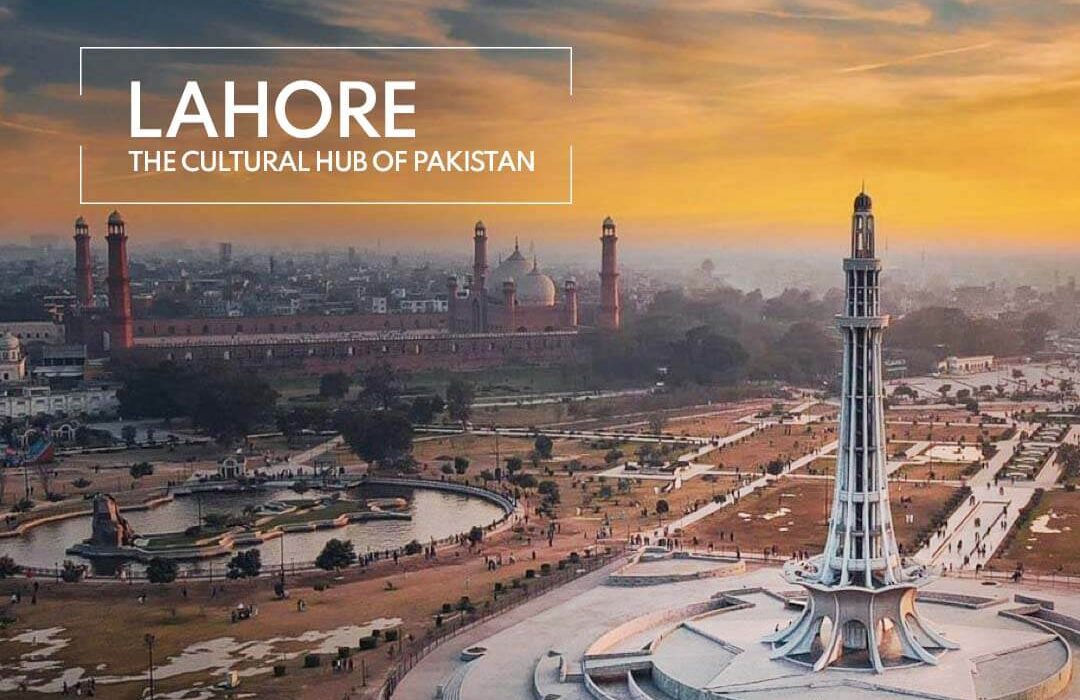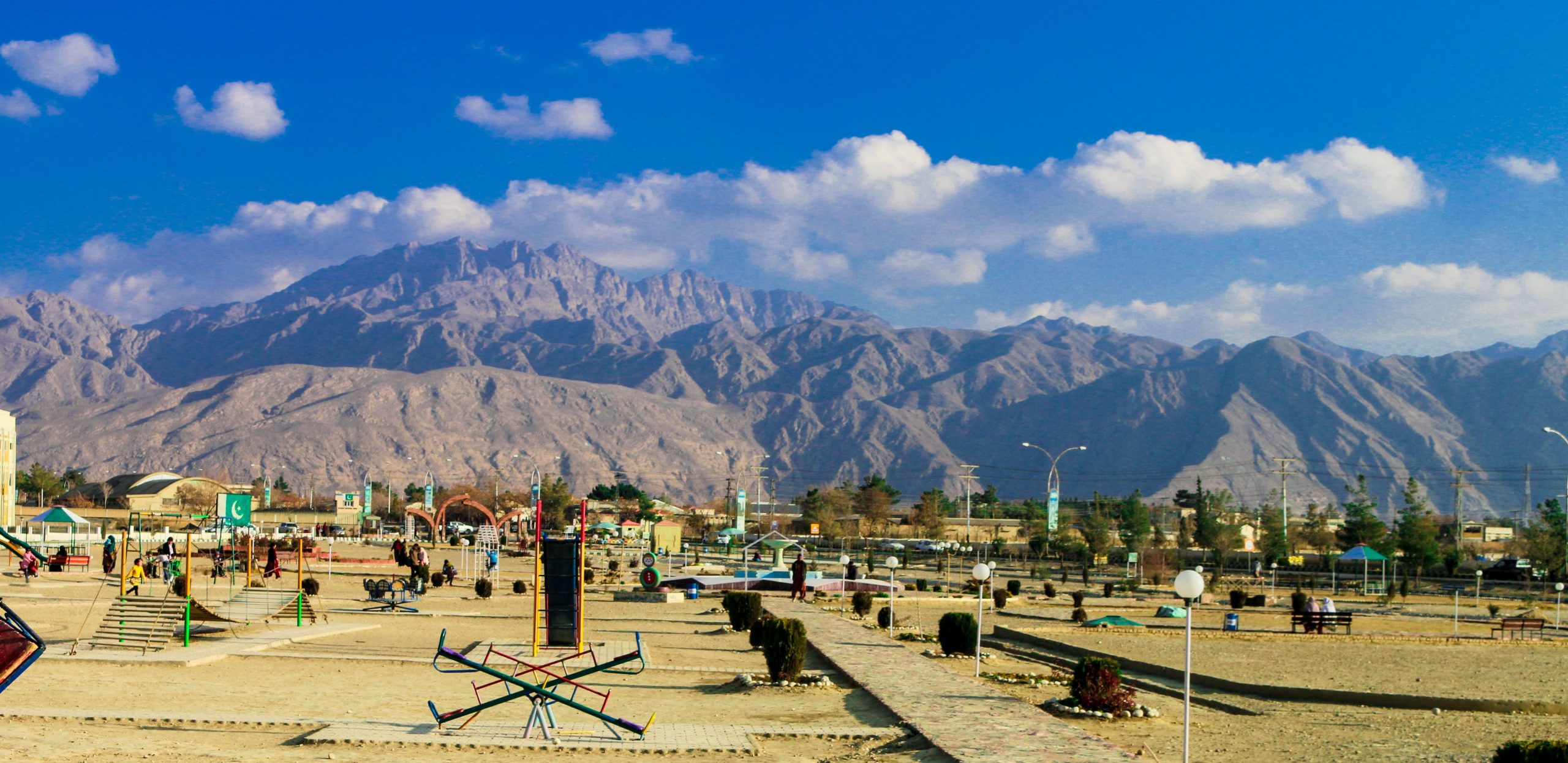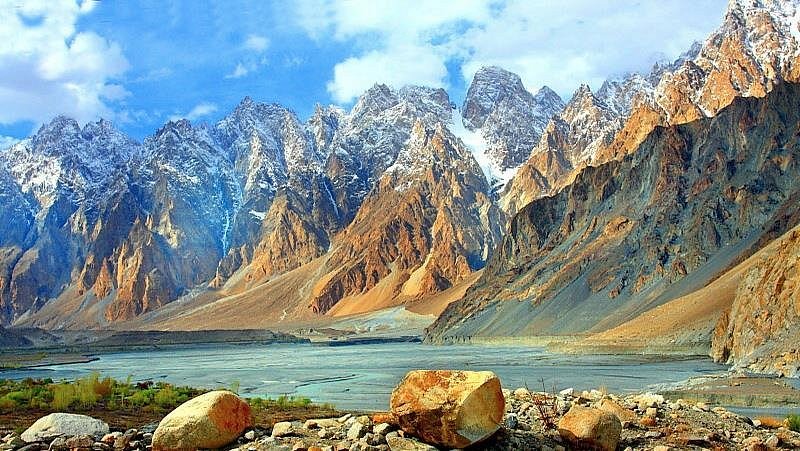
- November 12, 2024
Hunza is a mountainous valley in the Gilgit-Baltistan region of Pakistan. It is situated in the northern part of Gilgit-Baltistan, Pakistan. bordering with Khyber Pakhtunkhwa to the west and the Xinjiang region of China to the north-east.
Undoubtedly, Hunza Valley is probably the region people liked the most in the country. They have their rhythm, culture, and tradition, making every visitor fall in love with its extremely relaxing and hospitable atmosphere. For this reason, here we are discussing the Hunza Valley travel guide based on our experience in the region as well as on what we have heard and researched too.
We urge you to explore, but don’t forget one thing!
Make your visit a sustainable one. Our beloved country has a huge trash problem, and we ask you to be part of the solution. Don’t litter here and there, and bring a plastic bag along with you so you can take any trash you might find along the way.
Let’s take some sneak peek of its HISTORY
The earliest history we get about the Hunza Valley is traced back to the ancient Indian epic Mahabharata. During the Mahajanapada era in India, that area came under the influence of several major ancient Indian kingdoms, mainly the Kingdom of Kapisa, Gandhara, and Magadha. among others. So, after this Buddhism came to the Hunza Valley in the late 7th century.
Rock of Hunza
The region has several surviving Buddhist archaeological sites such as the Sacred Rock of Hunza. Nearby are former sites of Buddhist shelters. Hunza valley was central as a trading route from Central Asia to the subcontinent. It also provided shelter to Buddhist missionaries and monks who were visiting the subcontinent, and the region played a major role in the transmission of Buddhism throughout Asia.
The region was Buddhist majority till the 15th century, before the arrival of Islam in this region. Since then most of the people converted to Islam, the presence of Buddhism in this region has now been limited to archeological sites, as the remaining Buddhists of this region moved east to Leh where Buddhism is the majority religion. Not only this but here comes the interesting part i.e., the region has many works of graffiti in the ancient Brahmi script written on rocks, produced by Buddhist monks as a form of worship and culture. With the majority of locals converting to Islam, they had been left largely ignored, destroyed or forgotten, but are now being restored.
Hunza is located at:
Hunza is situated in the northern part of Gilgit-Baltistan, Pakistan, bordering Khyber Pakhtunkhwa to the west and the Xinjiang region of China to the north-east. It is situated at an elevation of 2,438 meters (7,999 feet). Geographically, Hunza consists of three regions, Upper Hunza (Gojal), Central Hunza (“Hunza Valley”), and Lower Hunza (“Shinaki”).
Map Link:
http://www.maplandia.com/pakistan/jammu-and-kashmir/gilgit/hunza/
Hunza is famous for:
Attabad Lake
Attabad lake, also known as Gojal Lake, is a lake in the gojal valley of northern Pakistan created in January 2010 by a landslide dam.
It was formed due to a massive landslide at Attabad village in Gilgit-Baltistan, 9 miles (14 km) upstream (east) of karimabad that occurred on January 4, 2010.
The landslide killed twenty people and blocked the flow of the Hunza River for five months.
The lake reached 13 miles (21 km) long and over 100 meters (330 ft.) in depth by the first week of June 2010.
Main Highlights:
Boating, jet-skiing, fishing, and other recreational activities.
Queen Victoria Monument, Karimabad, Hunza
The Queen Victoria monument at the top of the rock face behind karimabad can be reached in an hour from baltit. The best part is to take the channel path above the polo ground.
Hopar Glacier
Hopar valley is a cluster of villages around a natural bowl at a bend of bualtar glacier. Opposite of Hopar, the white baltar is joined by the barpu glacier.
Main Highlights:
This is a base camp for treks into the high, glacier-draped peaks called the hispar muztagh.
This valley is full of natural resources and natural beauty but due to ignorance of government and local politicians add to its backwardness. The 12 km length of Hopar glacier, you can actually hear it groan while standing at its side since it is the fastest moving glacier in Pakistan.
Rush Lake Hoper
The most visited tourist destination in the valley. Rush Lake Hoper is situated in Nagar District Gilgit Baltistan, Pakistan, located at the middle of Rush Peak, at over 4,694 meters. It is one of the highest alpine lakes in the world.
It also supports local domesticated and wild animals. This includes local animals like goats, yaks and sheep, and wild animals like Himalayan ibex, retch, fox and snow leopard.
The valley is home to many high mountains such as Golden peak or Spantik (7027m), Bawalter peak (from where Hoper glacier starts), Rush Peak and Miar peak (7257m). While the other series of mountains view from Rush peak like K2, Passu Peak, Diran Peak, Rakaposhi etc.
Altit Fort
In Hunza Valley, there are two old forts here, Altit and Baltit. In the village of Altit ,there located a Altit fort.and this village is about 3km from karimabad.Altit fort is about 800 years old and it was the first residence of the Mir of Hunza and now this fort is under renovation.one and a half km walk to the east takes you to the beautiful village of Altit.
Main Highlights:
At the entry point of Altit there is a beautiful garden of white apricots which is also known for its taste.
If you love old architecture and get fascinated by antique places then this is for you.
Baltit fort
Located at the top of a large rocky amphitheatre Baltit fort is about 3km jeep drive from Karimabad. It is built at the top of karimabad. The fort was built some seven hundred years ago. Doors inside were quite short and the tour guide explained that it was for defensive mechanisms in 1997. It was renovated by using mud bricks and timber in order to withstand the earthquakes in this area.
Main Highlights:
The Fort is now a museum and cultural centre.
It is based on a three storey building and it has a total of 53 rooms on the ground floor.
There are guest rooms, kitchens, storerooms, prisons etc. From here you can view the beautiful peak of Rakaposhi.
Rakaposhi
It is a mountain in a karakoram mountain range situated in a nagar valley and is easily visible from karimabad and surrounding areas of karimabad. It is situated in the middle of the Nagar and Bagrote valleys and danyor, approximately 100 km (62 mi) north of the city of Gilgit. Rakaposhi means “shining wall” or “ snow covered”.
Main Highlights:
It is the 27th highest peak in the world.
Its steep ice-covered peak is towering above the barren cliffs and terraces.
A good amount of area in Rakaposhi range is dedicated for community parks now.
-The Rakaposhi mountain range is the home of endangered species such as Marco Polo sheep, snow leopard, brown bear, and wolves.
Khunjerab pass
In the Karakoram highways, there is a high mountain pass which is known as khunjerab pass, which is the highest point at karakoram with 4730 meters peak. It seems so fascinated that the first glimpse at it arouses attraction.
Main Highlights:
At 4,800 meters high, Khunjerab Pass is the highest border in the world, to the extent that it has become a major tourist attraction, where you can go and take as many pictures as you want!
Curious, what people in Hunza Valley do?
The people of Hunza are known as the Hunzakuts. Mostly, they are fair-skinned and speak the almost unknown language Burushaski. Most of the locals in the region are Ismaili Muslims and are very generous in accommodating tourists. The majority of people practice subsistence agriculture and livestock is the main source of livelihood.
What’s the prevalent language in Hunza?
People primarily speak Burushaski in the Hunza, Nagar, and Yasin valleys of northern Pakistan. It is estimated that around 90,000 people speak the language. Burushaski is a linguistic isolate, a language whose genetic relationship to other languages is not yet clear.
Best months to visit:
The best time to visit Karimabad and the Hunza Valley is from April to October but avoid June to August if you do not like crowds. The Hunza Valley can get quite crowded during the mid-summer months as both the local and the Chinese tourists flock the place when the temperature is nice and warm.
What’s the Climate look like?
Hunza Valley has a moderate climate during summer. In winter it can snow up to 6 inches (15 cm) in the main valleys and up to 2–3 feet (60–90 cm) in the mountains.
Are there any Festivals/ Events at Hunza?
Here’s a list of some famous festivals celebrated in Hunza every year. You may plan your trips as per the event’s dates too if you want.
Gianni Festival
Date: 21st June to 25th June
It is celebrated in central and lower parts of Hunza Valley with the usual enthusiasm. The locals performed rituals at central places and also performed traditional dances on local tunes. The distinct local dish known as Dirum Pitti is prepared for the festival.
People celebrate this festival to mark the beginning of the harvest season. During the time when Hunza was an independent state, people performed the rites at the royal court. This event is known as Chineer and Ginani in Hunza, Ganoni in Gilgit, and Strublah in Baltistan.
Spring Blossom Festival
Date: 20th March to 30th April
The locals enjoy the weather during this period. Tourists from around the world also come to celebrate with them not only the beauty for Gilgit Baltistan but also for the festivity.
Joshio Chilmjusht
Date: 14th May to 15th May
People usually arrange the function to thank God, observing it at the start of spring with new hopes and desires.
Where to stay at Hunza?
As you already know, Hunza is another perfect spot to wander at your dreamland from the hustle-bustle of this busy life. Let’s discuss some of the credible hotels in Hunza Valley to pick your favorite.
Hard Rock Hunza Resort & Villas
Hard Rock Hunza Resort & Villas in Hunza has 5-star accommodation with a bar, a garden and a terrace. It is a perfect place for stay and dine enjoying sunrise and sunset from the hotel room and Balcony. Staff is very polite and friendly. And most importantly, Breakfast is divine.
Eagle Nest Hotel
The place in Hunza is Eagle Nest hotel, situated on the top of Hunza Valley at the best view-point of Duikar Village. It started as a small camping site in 1994 and grew into a full-service hotel. The hotel has 30 fully furnished rooms, two restaurants, a lobby, an open terrace built on a rock, a fruit garden & a traditional Hunza House.
Official website: https://eaglesnesthotel.com/
Hunza Darbar Hotel
Hunza Darbar Hotel is situated in Karimabad, at proximity to the Altit and Baltit Fort. It’s a building with three floors and a majestic mountain as the backdrop. The hotels’ lobby is adorned with traditional carpets and rugs, adding to its aesthetic value. Rooms at the Hunza Darbar Hotel are spacious with private balconies that offer a fantastic view of the surrounding area. Staff at the hotel are very friendly and attentive to all needs ensuring that your stay is pleasant and comfortable. Guests dine-in at the restaurant offering traditional and international cuisines served within or outside in the garden.
Official website: https://www.facebook.com/HunzaDarbarHotel/
Luxus Hunza
Luxus Hunza is located in Hunza and features a garden and a terrace. The bungalows are extremely comfortable and the view from the window is gorgeous.
Baltit Heritage Inn
Baltit Heritage Inn is situated in Hunza and features an open terrace. Among the facilities of this property are a restaurant, room service and ticket service, along with free WiFi. Great location, friendly staff, and furnished interior of the room is a major highlight.
Hunza Hidden Palace
Hunza Hidden Palace is offering accommodation in Gilgit. This 4-star hotel offers a 24-hour front desk. Free WiFi is offered.
Hotel Sardina
Hotel Sardina in Hunza has 1-star accommodation with a restaurant. This 1-star hotel offers a 24-hour front desk and room service. Guests can make use of a luscious garden over there.
Tourist Cottage Hunza
Tourist Cottage Hunza has a restaurant, garden and terrace in Gilgit. This 3-star hotel offers a 24-hour front desk and free WiFi. Every room includes a balcony.
Hunza Boutique Hotel
Located in Hunza, this hotel offers a luxurious restaurant. The property has a garden, as well as a terrace. The accommodation offers a 24-hour front desk as well as free WiFi.
Golden Peak View Hotel
Offering free WiFi, golden peak view hotel is set in Hunza. With a restaurant, the property also features a bar, as well as a garden. The property features a 24-hour front desk.
Where to Eat at Hunza?
Cuisines of Gilgit-Baltistan and especially Hunza have a lot to offer. It’s a diverse range with tempting tastefulness. Let’s explore them one by one.
Gyal
Gyal is a traditional local breakfast food, wheat pan-fried cakes with honey or fruit jam and the local favorite ingredient, apricot oil.
You can’t deny the fact that the apricot oil creates such a sweet aroma to go with the smoky flavors from the charcoal or wood used in cooking. It makes the perfect combination for a morning cup of buttery hot milk tea.
Local Oats (Muesli)
Who doesn’ love Oats? Almonds, Walnuts, Brown Flaxseed, and Apricot Seeds, all roasted perfectly and then ground, sprinkled over a combination of barley and a local species of wheat germ. You may top it off with a scoop of fresh locally made cream or yogurt and a spoonful of honey. And rest is a heaven to your taste buds.
Dried Fruits
Make sure to try the locally grown almonds, walnuts, apricots, and grapes. You may easily purchase large bags of dried mulberries, grapes, persimmons, walnuts, apricots and almonds in 300-500 PKR. Slightly price can vary as per quality.
Snacks made from Apples
Apples are one of the highlighting productions from Hunza Valley, and you can see orchards reaching up the mountain sides in all directions. It varies in terms of being sweet, crispy, tart and juicy. Snacks made from Apple are readily common there.
Mantu/ Rose Dumplings
These are shaped like Roses, and are Chinese-influenced that’s why it’s called ‘Mantu’. This is a special dish, if not store bought then people usually only eat them for special occasions, due to the time it requires to make each rose dumpling by hand.
Harissa
We all know Harissa well. It’s pre-boiling meat, and peeling local brown wheat before mixing, chefs will tear meat (often goat meat) into strips. These strips go into a bowl with the wheat, along with healthy servings of apricot oil, and continue to cook to make a delicious and extremely thick stew.
Some of the popular options
Hunza Food Pavilion
Location: At the entrance parking lot of Baltit Fort.
It is one of the most famous spots where the amazing Aunty makes completely authentic local Hunza Valley dishes, all the cooking done in-house and done fresh. This restaurant is run by two ladies who make fresh and live orders for you. Ladies make sure that all the food is organic and most of the ingredients they use are actually home-grown. The cooking here is full of authentic local Hunza flavor. Major highlights of this restaurant are as follows:
Dowdo (Noodle Soup)
It is made with hand-cut noodles using local wheat flour. The dowdo is generally made with minced chicken meat. Adding a few slices of onion and cilantro, seasoning with cardamom and cumin, the soup itself is a golden, buttery broth. You can’t ignore its broth which is so buttery and creamy without being heavy.
Chapshurro (Meat Pies)
Chapshurro is undoubtedly a speciality of Hunza Valley. It is full of minced beef, and the traditional chapshurro recipe uses spiced yak meat. The seasoning is simple, with a few additions of chopped onions, red chilies, small local tomatoes, and coriander leaves.
This dish is a wonderful example of the blending of local ingredients with cooking styles common to Central Pakistan. The piping hot, very filling chapshurro meat pies are one of the most widely-available dishes you’ll find in the Hunza Valley.
Berekutz (Cheese-filled Flour Cakes)
This cheese-filled flour cake is another hearty dish, perfect for those living and working in cooler mountain conditions. People make the cheese for this cake from goat’s milk, and it is traditionally a staple in both Hunza and Balti cuisine. First, you roll out the flour and generously spread apricot oil on each side before frying the cake lightly on a hot iron skillet. After you add the cheese filling, you place another thin layer of flour on top.
Café de Hunza
- Glacier Breeze Restaurant
- Osho Maraka
- Pizza Pamir
- Mountain Cup
- Green Corner Kitchen Hunza
- Hunza Cuisine
- Hotel Hunza Embassy
- Hunza Inn & Old Hunza Inn
How to get to and from Hunza
Once you are in Islamabad, the capital of Pakistan, you have two options to reach Hunza Valley. Let’s discuss both.
First Option
Take a flight directly to Gilgit airport and then make a short 2-3 hour drive to Hunza Valley. There are several rental van services that you can choose from to get from Gilgit to Hunza. You can find regular flights between Gilgit and Islamabad through PIA, but all flights are subject to delays due to weather clearance. This option is simpler but far less exciting than the second option.
Second Option
The second option is to take a 24-hour bus directly from Islamabad, witnessing the beauty of Karakoram, Skardu, and Kaghan valley on the way. This option is best for those who love to explore new places. Once you are in Hunza Valley, private vehicles are primarily used for transportation, and most people rent out jeeps for the duration of their tour. You can get to the different cities within Hunza via bus or through your own rented transport as well. The first stop is the state capital, i.e. Karimabad. And here you go!
Information you should know:
Here are some helpful essentials:
- D.H.Q, Gilgit Tel: 058114 920253
- D.H.Q. Hospital, Hunza Tel: 920712
- Chief Secretary, Gilgit-Baltistan Tel: 920200
- I.G Tel: 920231
- DIG Tel: 930012
- DC Gilgit Tel: 920100
- SP Gilgit Tel: 930234
- SP Hunza Tel: 930715


